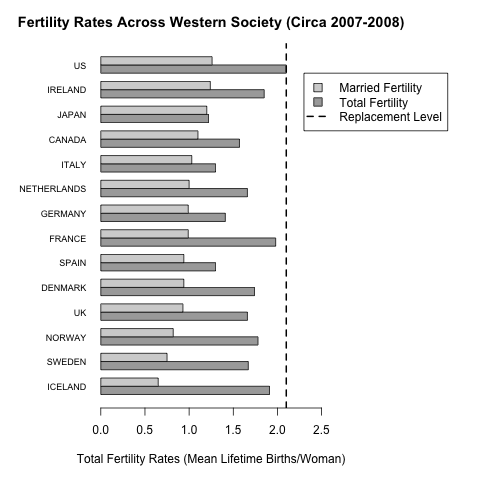A rebuttal to the accusation that Dr. Cameron was dropped from the American Psychological Association (APA)
-A reprint of an article in the Family Research Report, Nov-Dec, 1994.A number of attacks against Dr. Paul Cameron and Family Research Institute have appeared lately. While such attacks are not new, their volume and intensity is increasing even as the reach and importance of FRI grows.
The New Republic, a left-wing magazine with a circulation of 100,000 and a newly installed homosexual editor, Andrew Sullivan, attacked Dr. Paul Cameron with a two page article October 3,1994 (click here to view this article and resulting correspondence…). His reply and facsimiles of the key documents that were sent to The New Republic are included in this online rebuttal.
 * Dr. Cameron was not “dropped” from the APA. The first document, dated November 7, 1982 is a copy of the letter sent by Dr. Cameron announcing his resignation from the APA. By this point, all previous disputes between him and the APA had been settled, and there were no other charges or inquiries into possible ethical violations pending against him. The last previous correspondence from the APA was dated October 18, 1982, reminding Cameron that it had closed his dispute with 6 U. Nebraska psychologists.
* Dr. Cameron was not “dropped” from the APA. The first document, dated November 7, 1982 is a copy of the letter sent by Dr. Cameron announcing his resignation from the APA. By this point, all previous disputes between him and the APA had been settled, and there were no other charges or inquiries into possible ethical violations pending against him. The last previous correspondence from the APA was dated October 18, 1982, reminding Cameron that it had closed his dispute with 6 U. Nebraska psychologists.
November 29, 1982 marked the APA President’s acceptance of Cameron’s resignation. In March 1983, the APA Monitor (the official internal organ of the APA) published Cameron’s letter detailing his reasons for resigning. As per the APA President’s request, this letter had been sent January 12, 1983.
 A commentary on the March letter was published in June 1983 (click here…). Although Pietrzyk asserts that one cannot resign from the APA while under an ethics probe, this rings hollow considering that the APA President and APA Monitor did nothing to challenge Cameron’s decision to resign. Only after the accepted resignation did the ethics committee “drop” Cameron for non-cooperation (see December 2, 1983 letter). Most of this and considerably more was covered in exchanges between Dr. Cameron and various adversaries from the U. Nebraska between October 1985 and March 1986 in the Nebraska Medical Journal.
A commentary on the March letter was published in June 1983 (click here…). Although Pietrzyk asserts that one cannot resign from the APA while under an ethics probe, this rings hollow considering that the APA President and APA Monitor did nothing to challenge Cameron’s decision to resign. Only after the accepted resignation did the ethics committee “drop” Cameron for non-cooperation (see December 2, 1983 letter). Most of this and considerably more was covered in exchanges between Dr. Cameron and various adversaries from the U. Nebraska between October 1985 and March 1986 in the Nebraska Medical Journal.
* On October 12, letters editor Amy Sheffer said that editor Sullivan had just told her to delete Cameron’s observation that “Scientists besides myself have noted the addiction to falsehood and deception that is characteristic of homosexuals. Why didn’t The New Republic reveal that your author is a member of a gay rights group?”
She said that since they had noted that Pietrzyk wrote for the Log Cabin Republicans, such a designation was unnecessary. FRI replied that this was deceptive since few knew that the Log Cabin Republicans was a gay rights group. The sentence was retained.
There are a number of criticisms raised in The New Republic article. Some appear plausible, and some have been picked up and repeated as gospel truth by nonhomosexual newspapers.
Addressing some of these:
* “he is the architect of unreliable ‘surveys’ that purport to show strains of violence and depravity in gay life.”
Response: Gays create myths for their political and psychological comfort. They want to be seen as “shocked by any claim that we are other than kind, gentle people.” One homosexual contends that “gays are an experiment by nature in an attempt to create a human nature more compatible with the requirements of civil society.”1
But the gay life is a life of violence and depravity:
– FRI has published2 estimates from its national sex survey that suggest that 80% of gays have engaged in oral-anal contact at least once in their life. Such unhealthy and unsanitary practice is commonplace among homosexuals.
– 40% of 4,808 Canadian gays in 1991-1992 admitted to oral-anal sex in the last 3 months, according to a governmentfunded study run by gays representing the largest survey of homosexuals in Canada.3
– In the largest-ever study of homosexuals, completed just this year by The Advocate, the national weekly gay magazine, 13,000 readers responded to the questionnaire. The Advocate said that 45% of respondents “loved” anal/oral sex. Additionally, 20% said that they had engaged in bondage and discipline and 10% in sadomasochism in the past 5 years. And, most tellingly, among those who knew that they had the AIDS virus, “11% have said or implied that they were HIV-negative in order to have sex.” (8/23, p. 23)
FRI 2 found that about 13% of gays said that they had been raped, and a third had participated in sadomasochism.5
A study of 930 English gays asked whether they had ever been “sexually molested or raped?” 28% answered “yes.” In half (47%) of these cases the victim was either forcibly anally penetrated or an attempt to do so was made. Of men over 21 years of age, 52 cases (66% of the total reported) “were assaulted by regular or casual sexual partners.”
The authors of the English study (who appear to be homosexuals themselves) note that “Fantasies of the sexually forceful man, the pleasure of ‘being taken;’ and the excitement of power-driven sex are very common in gay culture and pornography. All these collective sexual fantasies normalize sexual abuse and rape of gay men by gay men, providing motivation, justification, and normalization for the assault. It is difficult to see how a climate of intolerance towards sexual aggression can be achieved when sexual aggression is one of the mainstays of collective sexual fantasies.” (p. 293)
* “Although thousands of heterosexuals allegedly responded to his survey, Cameron could get only 41 gay men and 24 lesbians to respond. The extremely small sample size should have invalidated any conclusions about the sexual behavior of the gay population.”
Response: There are two problems with this criticism: 1) Pietrzyk didn’t accurately report how many gays and lesbians were in our sample; 2) he fails to understand modern statistical sampling theory.2
We reported all our comparisons between those who were exclusively heterosexual v the combined group of bisexuals and homosexuals. We had approximately 85 gays and 70 lesbians for each comparison though, as in all such studies, not every respondent answered each question. Combining bisexuals and homosexuals has become rather typical because their distinguishing characteristic is having same-sex relations. The new U. Chicago sex survey also combined bisexuals and homosexuals. It captured only 43 bi/homosexual men and 27 bi/homosexual women in its sample.6
The reason for these seemingly low numbers is that FRI, unlike Kinsey and the bulk of studies in the sexological literature, utilized random area cluster sampling techniques. Because homosexuals make up only a tiny fraction of the population, they show up in small numbers in any survey that randomly draws from the places people live. However, it is possible to have a fair degree of confidence in the generalizability of our results to “urban homosexuals-in-general,” at least for the time we did the survey.
Kinsey had 2,000 volunteer homosexuals. But our findings, based on a random sample a twelfth the size of his, are far more apt to be representative of homosexuals-in-general. With more money and time, we would have drawn a larger sample and our results would be more certain still. Having said that, however, as the studies about gays accumulate, the parameters we published look “solid.”
For instance, we reported that 4% of men and 16% of women claimed that they had been “raped.” The U. Chicago survey did not ask about rape, per se. Instead it reported that 22% of women and 2% of men were “forced to do something sexually at some time.” (p. 223)4
9 In his counter reply, Pietrzyk says he’d “sure like to know the source for Cameron’s claim that ‘one third of American men have served in the Armed Forces.”‘
Response: On p. 343 of the Statistical Abstract of the United States 1990, we find that over 27,000,000 men have served. Since there were under 79,000,000 men over the age of 18 in 1990, the math is straightforward.
We can only report what our respondents tell us. It is noteworthy that Pietrzyk considers “preposterous” that ” 13 percent have served time in prison.” Since FRI actually asked “Have you ever been jailed or imprisoned for a crime?” Pietrzyk demonstrates his inability to get the facts straight. By comparison, the U. Chicago sex survey6 reports that “about 13%” of its respondents (both men and women) had “ever spent the night in jail.” (p. 219) It actually asked if respondents had ever “spent one night or more” “in (a military jail), jail, prison, reform school or detention center.” (p. 612)
*Pietrzyk rails about our utilizing obituaries from gay journals and calls it “a methodology that would not pass an undergraduate statistics course.”
Response: Our methodology was good enough for the Eastern Psychological Assn convention in 1993. Dr. Charles Smith of SUNY at Buffalo, chair of the session, publicly commended our novel approach and said he was going to warn the gays at his institution about the hazards of their ways. Further, it was good enough for the refereed scientific journal Omega in 1994, a journal specifically devoted to studies of death and dying.
The U. Chicago study provides grist for FRI’s mill as well. Note p. 305:
| age |
% men gay |
% women lesbian |
| 18-29 |
2.9 |
1.6 |
| 30-39 |
4.2 |
1.8 |
| 40-49 |
2.2 |
1.3 |
| 50-59 |
0.5 |
0.4 |
These results should have given the authors a clear warning that homosexuals were much less apt to be old, yet they chose not to comment. Our lifespan study offers a plausible reason for the paucity of older homosexuals in the U. Chicago study: they die young. Other explanations for these findings require much more convoluted logic. For example, note that the proportions of homosexuals do not top out in the youngest age group. Therefore, it would be difficult to attribute the distribution of findings solely to the growth of the gay movement. Another plausible explanation would be that older homosexuals simply drop out of the lifestyle (if they don’t die first). However, if proved true, this would simultaneously argue that gays can and do change, as well as suggest that the gay lifestyle offers scant long-term satisfaction.
*Pietrzyk repeatedly questions Dr. Cameron’s scholarly credentials and “conveniently” avoids using his professional title of “Dr.”
Response: Pietrzyk is a political science graduate student at George Washington University. He has failed numerous times to get his facts straight in this brief article in the New Republic. Dr. Cameron has published over 60 articles in peer-reviewed scientific journals and has written several books. How does being a member of a gay club qualify Pietrzyk to engage in scholarly critique?
*Pietrzyk complains that we have analyzed only “sexual mass murder” and found homosexuals responsible for about half of these sprees.
Response: He doesn’t deny the facts about sexually- motivated murders, he merely tries to divert attention toward serial and other non-sexual mass murders.
*Pietrzyk claims that we have “distorted” the evidence for disproportionate child molestation by gays.
Response: He cites our 1987 pamphlet on child molestation. It was updated in 1993. With new information our estimate of the proportion of homosexuals has dropped from 4% to between “1% to 3%” and our estimate of the proportion of homosexual molestations to “between a fifth and a third.” Thus the relative proportion of homosexual molestation has remained about the same (“the risk of a homosexual molesting a child is 10 to 20 times greater than that of a heterosexual”).
*Pietrzyk claims that Cameron advocated the “extermination of male homosexuals.”
Response: The Forum interviewer remarked that many societies have considered homosexuality a capital crime. Noting that it would be cheaper to kill homosexuals in primitive societies than jail or quarantine them is hardly an endorsement. In fact, Cameron is quoted in the same article as saying that such an idea is “not politically, ethically or socially acceptable” today. Where former Surgeon General Koop got his information is mystifying. He never asked Dr. Cameron whether he advocated such a policy.
*Pietrzyk calls “extreme” and “absurdly high” FRI’s estimate that lesbians are “nineteen times more apt to have syphilis than straight women and four times more apt to have had scabies.”
Response: Pietrzyk finally has it right. That’s just what we reported in the Nebraska Medical Journal in 1985.7 We also p. 6 reported that lesbians were three times as apt to have had a genital discharge, and twice as apt to have sores on their genitals.
The new U. Chicago6 survey does not report its sexually transmitted disease findings for lesbians. However, it reports that lesbians had about 4 times as many sexual partners as heterosexual women, were considerably more apt to engage in 11 unusual sexual practices,” and that a larger number of partners was associated with higher STD rates. It is probable that it found essentially what we found but was reluctant to publish the findings. [see ‘New Sex Survey: Dishonest Science’ in this issue of Family Research Report]
*Pietrzyk calls our 1983 national sex survey “discredited.”
Response: Since results from the FRI survey have been published in a number of scientific journals (e.g., Nebraska Medical Journal, Psychological Reports, Lancet, and Science), and have formed the basis for a number of scientific papers presented to the Eastern Psychological Assn, it would appear that it is “discredited” by gay activists, not by scientists.
FRI’s sex survey was one of the first national sex surveys to be drawn on a random sample. Random samples are supposed to give representative samples. Theory aside, however, proof is always in whether the technique “works;” that is, whether FRI’s results stack-up against other well-done surveys. For instance, how do FRI’s results compare to the recent U. Chicago effort?
FRI, in attempting to interview people from age 18 through the end of adulthood, ran into a buzzsaw of high rejection rates in people aged 50 or above. Overall, almost half of our potential respondents refused to fill out our questionnaire. But the median age of those who rejected was 55, meaning we got high rates of compliance for those in their 20s and 30s and miserable rates of compliance for those in their 60s, 70s, and 80s.
The lore that has developed from doing Gallup polls and similar surveys is “those who don’t respond are generally much like those who do.” So FRI reported its rejection-rate and then ignored the nonresponders when reporting results – just as the U. Chicago study did. We assumed that a person who initially rejected the survey would not be worth the effort and cost of a follow-up appeal. So we put our limited resources (about $100,000) toward fattening the size of the sample rather than re-visiting rejecters. All told, we got usable responses from almost 5,200 adults.
U. Chicago paid its respondents $25 to $35 apiece and apparently repeatedly called-back its rejecters, offering them more money to get them to cooperate. It got almost 3,200 adults for $2,400,000. Still, 20% of their respondents refused to take the survey though offered considerable sums of money. So their findings, like ours, could be way off if those who rejected were quite different from those who cooperated. No one will ever know. But since they found “no relation between respondent fee [up to $100] and quality of the information provided” (p. 56), it fits the model that such pursuit is probably unwarranted.
Beside detail about sampling theories, what proof emerges from the empirical pudding? How do the results of these two surveys, one greased with high levels of effort on the part of a few highly-trained and closely supervised interviewers while essentially ignoring refusals, the other with over 200 interviewers and the willingness to expend significant time and money to reduce the rejection rate, compare? They were very close. 6,7
Where both surveys asked similar questions, similar point estimates were generated. Comparing the two samples:
– ever syphilis in life?
FRI men – 2.4%, women – 0.9%
U C men – 0.9%, women – 0.7%.
– ever gonorrhea in life?
FRI men – 11.2%, women – 3.7%
U C men – 9%, women – 4.7%
– ever genital warts in life?
FRI men 5.0%, women – 4.3%
U C men 3.3%, women – 5.9%
– ever hepatitis in life?
FRI men – 3.6%, women – 2.4%
U C men – 1.3%, women – 0.9%
The lower figures on hepatitis for the U. Chicago study may be related to their claim that “hepatitis A is not sexually transmitted but hepatitis B is.” Subsequently they “eliminated the cases that were evidently type A from the counts.” (p. 380) More generally, the FRI study was only done in urban areas compared to the broader geographic coverage of the U. Chicago study. Still, examination of the unweighted comparisons above suggests that all the differences were within one or two percentage points.
Furthermore, about 21% of FRI females reported having “obtained an abortion” while 19% of the U. Chicago women said that they had ever “had an abortion.” (p. 457)
9% of gays and 5% of lesbians in the U. Chicago effort reported that they were heterosexual virgins. (p. 311) 8% of FRI’s gays and 5% of our lesbians reported that they were heterosexual virgins. Since few homosexuals in either survey were over age 50, where rejecters became a significant problem, we could expect high levels of agreement between both methodologies.
 *Associated Press: The AP article (click here to view…) was carried by the Colorado Springs Gazette Telegraph on 9/16/94. FRI called AP on 10/12 about the falsehoods that Cameron: 1), “is barred from practicing psychology in Nebraska” and 2) had falsified data about homosexuals. AP was faxed a copy of Cameron’s license and a copy of the Bangor Daily News correction (see above). The Gazette Telegraph published the AP correction on 10/26/94 after FRI informed it of its existence.
*Associated Press: The AP article (click here to view…) was carried by the Colorado Springs Gazette Telegraph on 9/16/94. FRI called AP on 10/12 about the falsehoods that Cameron: 1), “is barred from practicing psychology in Nebraska” and 2) had falsified data about homosexuals. AP was faxed a copy of Cameron’s license and a copy of the Bangor Daily News correction (see above). The Gazette Telegraph published the AP correction on 10/26/94 after FRI informed it of its existence.
* The Advocate wrote on 11/1/94 that “Cameron, who contends that gays and lesbians are sexual deviants, was expelled from the American Psychological Association in 1983 for falsifying research data about gays. He was also barred from practicing in Nebraska, the only state in which he had been licensed.” (p. 16)
* The Bangor Daily News, 10/10/90, had the following as part of its story of a Cameron visit to Maine: “The APA, however, said that Cameron was dropped from the membership because of a violation of the APA’s code of ethics involving the misuse of colleagues’ research.” It published the correction. Maine has a constitution which permits suits for libel irrespective of their proven economic impact. Newspapers in Maine publish corrections with dispatch.
References: 1. Harry J. (1982) Gay children grown up. NY: Praeger, p. 168. 2. Cameron P, Cameron K., & Proctor, K. (1989) Effect of homosexuality upon public health and social order. Psychological Reports, 64, 1167-1179. 3. Doing it in the 90s. Canadian AIDS Society, May 1993.4. Michael, RT, Gagnon, JH, Laumann, EO, & Kolata G. (1994) NY:Little, Brown. 5. Hickson, F.C.I., et al. (1994) Gay men as victims of nonconsensual sex. Archives Sexual Behavior, 23, 281-294. 6. Laurnarm, EO, Gagnon JH, Michael, RT, Michaels, S. (1994) The social organization of sexuality: sexual practices in the United States. Chicago: U. Chicago Press. 7. Cameron, P, et al. (1985) Sexual orientation and sexually transmitted disease. Nebraska Medical Journal, 70, 292-299.















